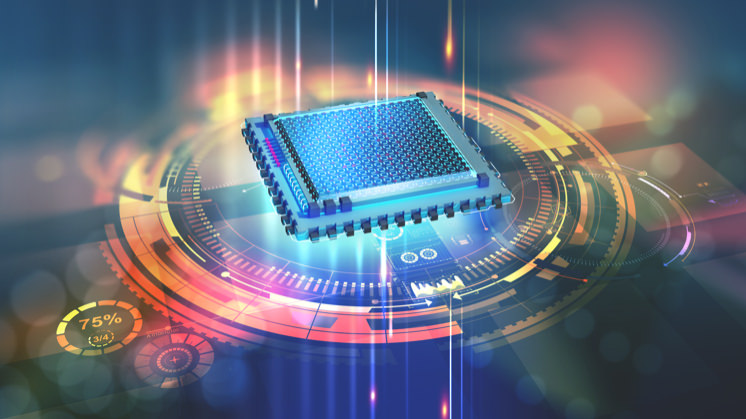Small Tech, Big Impact: Unleashing the Power of Nanotechnology
Nanotechnology breakthroughs have revolutionized various fields, offering immense potential for scientific advancements and technological innovations. By manipulating matter at the nanoscale, which is one billionth of a meter, scientists and engineers have unlocked a world of possibilities. This article explores the remarkable impact of nanotechnology breakthroughs, highlighting how this small tech has the potential to bring about significant changes in medicine, electronics, energy, and many other industries.
Applications of Nanotechnology in Medicine
Nanotechnology Breakthroughs: Small Tech, Big Impact
Applications of Nanotechnology in Medicine
Nanotechnology, the science of manipulating matter at the atomic and molecular scale, has made significant strides in various fields, including medicine. This emerging field has the potential to revolutionize healthcare by enabling targeted drug delivery, early disease detection, and personalized medicine. In this article, we will explore some of the exciting applications of nanotechnology in medicine and the impact it can have on improving patient outcomes.
One of the most promising areas of nanotechnology in medicine is targeted drug delivery. Traditional drug delivery methods often result in systemic side effects, as the medication is distributed throughout the body. Nanoparticles, on the other hand, can be engineered to specifically target diseased cells or tissues, minimizing side effects and maximizing therapeutic efficacy. These nanoparticles can be loaded with drugs and guided to their intended destination using various targeting mechanisms, such as surface modifications or magnetic guidance. This targeted drug delivery approach holds great potential for treating diseases like cancer, where precision is crucial.
Another area where nanotechnology is making a significant impact is in early disease detection. Nanosensors, capable of detecting biomarkers associated with specific diseases, can be used to identify diseases at their earliest stages, when treatment is most effective. These nanosensors can be designed to detect a wide range of biomarkers, including proteins, nucleic acids, and even single cells. By providing early and accurate diagnosis, nanotechnology can help save lives and improve patient outcomes.
Furthermore, nanotechnology is enabling the development of personalized medicine. Each individual is unique, and their response to medication can vary greatly. Nanotechnology allows for the creation of personalized drug delivery systems tailored to an individual’s specific needs. By analyzing a patient’s genetic makeup and other relevant factors, nanoparticles can be designed to deliver the right dose of medication at the right time, ensuring optimal therapeutic outcomes. This personalized approach has the potential to revolutionize the field of medicine, moving away from a one-size-fits-all approach to a more targeted and effective treatment strategy.
In addition to targeted drug delivery, early disease detection, and personalized medicine, nanotechnology is also being explored for regenerative medicine. Nanomaterials can be used to create scaffolds that mimic the extracellular matrix, providing a supportive environment for tissue regeneration. These scaffolds can be loaded with growth factors or stem cells to promote tissue repair and regeneration. This approach holds great promise for treating conditions such as bone defects, cartilage damage, and even organ transplantation.
While the applications of nanotechnology in medicine are promising, there are still challenges that need to be addressed. Safety concerns, such as the potential toxicity of nanoparticles, need to be thoroughly investigated to ensure patient safety. Additionally, the scalability and cost-effectiveness of nanotechnology-based medical interventions need to be considered for widespread adoption.
In conclusion, nanotechnology has the potential to revolutionize medicine by enabling targeted drug delivery, early disease detection, personalized medicine, and regenerative medicine. These breakthroughs have the potential to improve patient outcomes, minimize side effects, and provide more effective treatments. However, further research and development are needed to address safety concerns and ensure the scalability and affordability of nanotechnology-based medical interventions. With continued advancements in this field, nanotechnology holds great promise for the future of healthcare.
Nanotechnology in Energy Storage and Conversion
Nanotechnology Breakthroughs: Small Tech, Big Impact
Nanotechnology has emerged as a game-changer in various fields, and one area where it has shown immense potential is energy storage and conversion. With the increasing demand for clean and sustainable energy sources, nanotechnology offers innovative solutions that can revolutionize the way we generate, store, and utilize energy.
One of the most significant breakthroughs in nanotechnology is the development of nanomaterials for energy storage. Traditional batteries have limitations in terms of capacity, charging time, and lifespan. However, nanomaterials, such as nanowires and nanotubes, have shown remarkable properties that can address these limitations.
Nanowires, for instance, have a high surface-to-volume ratio, allowing for more efficient charge and discharge rates. This means that batteries made with nanowires can be charged faster and hold more energy. Additionally, nanowires can be engineered to have enhanced conductivity, leading to lower resistance and higher power output.
Another promising nanomaterial is graphene, a single layer of carbon atoms arranged in a hexagonal lattice. Graphene has exceptional electrical conductivity, mechanical strength, and thermal stability. These properties make it an ideal candidate for energy storage devices, such as supercapacitors. Supercapacitors made with graphene can store and release energy rapidly, making them suitable for applications that require quick bursts of power, such as electric vehicles.
Nanotechnology also offers solutions for improving the efficiency of solar cells, which are crucial for converting sunlight into electricity. Traditional solar cells have limitations in terms of their ability to capture and convert sunlight efficiently. However, nanotechnology has enabled the development of nanoscale structures that can enhance light absorption and charge separation.
One example is the use of quantum dots, tiny semiconductor particles that can be tuned to absorb specific wavelengths of light. By incorporating quantum dots into solar cells, researchers have been able to increase their efficiency and broaden their light absorption range. This means that solar cells can generate more electricity from a wider spectrum of sunlight, making them more efficient and cost-effective.
Nanotechnology has also paved the way for the development of flexible and lightweight solar cells. Traditional solar cells are rigid and bulky, limiting their applications. However, nanomaterials, such as organic polymers and perovskites, can be processed into thin films that are flexible and lightweight. These thin-film solar cells can be integrated into various surfaces, such as windows, clothing, and even mobile devices, enabling solar energy harvesting in unconventional ways.
Furthermore, nanotechnology has opened up possibilities for energy conversion through thermoelectric materials. Thermoelectric materials can convert waste heat into electricity, offering a way to harness and utilize the vast amounts of heat generated by industrial processes and power plants. Nanotechnology has allowed for the engineering of materials with enhanced thermoelectric properties, such as reduced thermal conductivity and increased electrical conductivity. These advancements have the potential to significantly improve the efficiency of thermoelectric devices and contribute to waste heat recovery.
In conclusion, nanotechnology has brought about remarkable breakthroughs in energy storage and conversion. Nanomaterials have shown immense potential in improving the performance of batteries and supercapacitors, while nanoscale structures have enhanced the efficiency of solar cells. Additionally, nanotechnology has enabled the development of flexible solar cells and advanced thermoelectric materials. With continued research and development, nanotechnology holds the promise of transforming the energy landscape and driving us towards a more sustainable future.
Nanomaterials for Environmental Remediation
Nanotechnology Breakthroughs: Small Tech, Big Impact
Nanotechnology has emerged as a revolutionary field with the potential to transform various industries. One area where nanotechnology has shown great promise is in environmental remediation. Nanomaterials, with their unique properties and capabilities, offer innovative solutions to address the pressing environmental challenges we face today.
One of the key advantages of nanomaterials is their high surface area to volume ratio. This means that even a small amount of nanomaterial can provide a large surface area for chemical reactions to occur. In the context of environmental remediation, this property is particularly valuable as it allows for efficient removal of pollutants from contaminated sites.
Nanomaterials can be tailored to target specific contaminants, making them highly effective in remediation efforts. For example, nanoparticles made of iron oxide have been successfully used to remove heavy metals from contaminated water sources. These nanoparticles have a high affinity for heavy metals, allowing them to bind to the pollutants and remove them from the water.
Another exciting application of nanomaterials in environmental remediation is their ability to break down organic pollutants. Nanoparticles made of titanium dioxide, for instance, have been shown to effectively degrade organic compounds such as pesticides and dyes. When exposed to light, these nanoparticles produce reactive oxygen species that can break down the pollutants into harmless byproducts.
Furthermore, nanomaterials can be used to enhance the efficiency of existing remediation techniques. For instance, in soil remediation, nanomaterials can be added to enhance the effectiveness of traditional methods such as bioremediation or phytoremediation. By increasing the surface area available for microbial activity or plant uptake, nanomaterials can accelerate the degradation or removal of contaminants from the soil.
Despite the numerous benefits of nanomaterials in environmental remediation, there are also concerns regarding their potential environmental and health impacts. It is crucial to carefully assess the risks associated with the use of nanomaterials and develop appropriate safety measures to mitigate any potential harm.
To ensure the responsible use of nanomaterials, researchers are actively studying their fate and transport in the environment. Understanding how nanomaterials behave in different environmental matrices, such as soil or water, is essential to assess their potential risks and develop effective strategies for their deployment.
In addition, efforts are being made to design nanomaterials that are less toxic and more environmentally friendly. By modifying the surface properties or composition of nanomaterials, researchers aim to reduce their potential adverse effects while maintaining their remediation capabilities.
In conclusion, nanomaterials hold great promise for environmental remediation. Their unique properties and capabilities make them highly effective in removing pollutants from contaminated sites. From heavy metal removal to organic compound degradation, nanomaterials offer innovative solutions to address environmental challenges. However, it is crucial to ensure the responsible use of nanomaterials and carefully assess their potential risks. By doing so, we can harness the power of nanotechnology to create a cleaner and more sustainable future.In conclusion, nanotechnology breakthroughs have demonstrated the potential for significant impact across various fields. The ability to manipulate matter at the nanoscale has led to advancements in medicine, electronics, energy, and materials science. Nanotechnology has enabled the development of targeted drug delivery systems, more efficient solar cells, faster and smaller electronic devices, and stronger and lighter materials. These breakthroughs have the potential to revolutionize industries and improve the quality of life for individuals worldwide.




